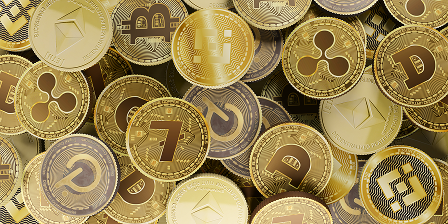Examples of Using Blockchain Outside of Cryptocurrencies
February 18, 2025
Blockchain, originally created as the basis for cryptocurrencies, is now being used in a variety of industries. Its key characteristics – decentralization, transparency, data immutability and high security – make it in demand in a variety of fields. Its implementation helps solve problems of transparency, reliability and efficiency. Despite the complexity and high cost of implementation, the potential of blockchain is obvious. Every year it becomes more and more in demand, helping business and society adapt to the challenges of the digital era.
In this article, we will look at examples of using blockchain outside of the cryptocurrency world.
- Logistics and supply chain management
Blockchain helps improve supply chain transparency and efficiency.
An example: Companies like IBM and Maersk are using blockchain-based platforms to track cargo in real time. This allows you to find out where the goods are, what condition they are in and what the delivery route was.
Advantages: Eliminate middlemen, reduce the risk of counterfeiting, speed up inspections and minimize paperwork.
2. Medicine
In healthcare, blockchain is used to securely store medical data.
An example: Estonia has implemented a blockchain platform for electronic medical records. Patient data is securely protected, and access to it is possible only with the consent of the owner.
Advantages: Protect privacy, prevent data loss and facilitate the exchange of information between different medical institutions.
3. Voting
Blockchain-based electronic voting makes electoral processes more transparent and reliable.
An example: In 2018, residents of West Virginia (USA) could vote in elections through a blockchain-based application.
Advantages: Elimination of falsifications, transparency of vote counting and the ability to vote remotely.
4. Copyright protection
Blockchain allows you to record ownership of digital content.
An example: Platforms like Ujo Music help musicians upload their works, receive royalties, and manage rights without the need for middlemen.
Advantages: Transparency in revenue distribution, copyright protection, and reduced dependence on large platforms.
- Real estate
Blockchain technology is used to register real estate rights and conduct transactions.
An example: Sweden is testing blockchain for land registry management. This simplifies the process of buying and selling real estate, making it faster and more reliable.
Advantages: Accelerate transactions, reduce the risk of fraud and reduce bureaucracy.
- Gaming industry
Blockchain is actively used in video games to create and manage virtual assets.
An example: Axie Infinity allows users to earn money by trading characters and objects that exist on the blockchain as NFTs.
Advantages: Transparency of ownership, the ability to monetize game items and independence from centralized servers.
7. Education
In the educational field, blockchain helps save and verify educational documents.
An example: The Massachusetts Institute of Technology (MIT) issues diplomas digitally via blockchain. This allows employers to easily verify the authenticity of the document.
Advantages: Simplifying the verification of diplomas and preventing counterfeits.
8. Finance and insurance (without cryptocurrencies)
Blockchain allows you to automate processes and increase transparency in financial and insurance companies.
An example: Using smart contracts to automatically fulfill the terms of insurance policies. In the event of an insured event, funds are transferred automatically.
Advantages: Reduce costs, minimize errors and speed up payouts.
9. Energy
Blockchain helps manage energy distribution and stimulates the development of renewable sources.
An example: Platforms like Power Ledger allow households with solar panels to sell excess energy directly to neighbors.
Advantages: Transparency in transactions, simplifying energy management and promoting the use of green energy.
10. Humanitarian aid and charity
Blockchain is used to track the distribution of funds in charities.
An example: The World Food Program has implemented blockchain to ensure transparency in the distribution of aid in refugee camps.
Advantages: Elimination of corruption, reduction of administrative costs and confidence of donors that their funds reach recipients.
Blockchain has become a powerful tool for transforming a variety of industries, moving far beyond its original role in the cryptocurrency ecosystem. Thanks to its decentralized architecture, data immutability and transparency, this technology enables new approaches to solving complex problems in logistics, medicine, asset management, energy and many other areas.
Its implementation helps to increase efficiency, reduce operating costs and strengthen trust among process participants. However, large-scale blockchain integration faces a number of challenges, such as the need for standardization, high barriers to entry, and the need to adapt existing business models.
However, as technology advances and awareness of the benefits of blockchain grows, we can expect it to become a key element of digital transformation in the global economy. Companies willing to invest in exploring and integrating this technology will be able to gain a competitive advantage and achieve leadership positions in their industries.



